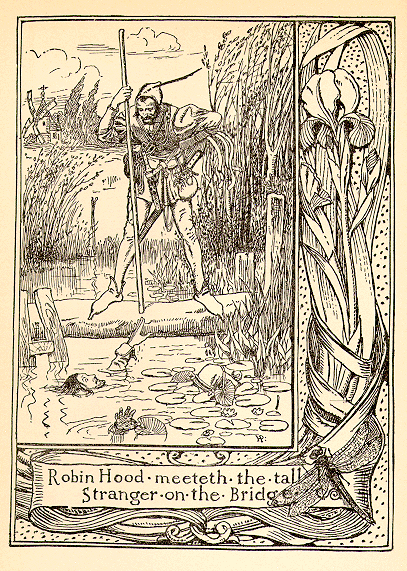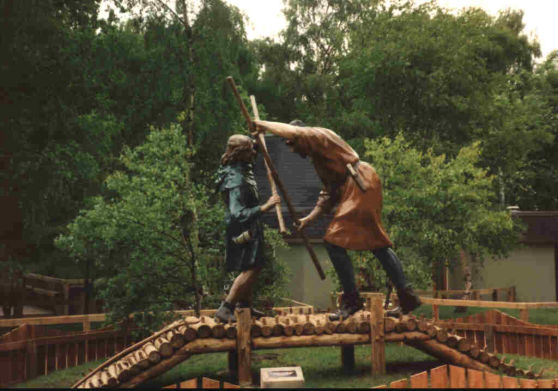
Friend and Lieutenant
The first thing you should know about Little John is that he is not -- little, that is. Some stories say he was over seven feet tall. Often he looks like a wild man with a thick beard and dressed in skins.
The next thing you should know about Little John is that he is Little, -- John Little is his real name. However, some say it is really John Naylor or le Nailer. It's said he comes from Hathersage in Derbyshire, the shire next to Nottinghamshire which was controlled by the same sheriff. His grave can be found in a churchyard in Hathersage. Click here to see his tombstone , and click here to see a picture of me alongside his very long grave .
Little John is Robin Hood's lieutenant, his second-in-command. In the early ballads, he is nearly as important as his master. John has his own adventures. For example, there's the time he entered a Nottingham archery contest. The sheriff liked what he saw and hired Little John. Using the alias Reynold Greenlefe, the outlaw promised to be the worst servant the sheriff ever had. By the story's end, Little John encouraged the sheriff's cook to join Robin's band and they lured the sheriff into the greenwood where he was robbed by Robin Hood. In another ballad, John dresses as a beggar and fights three miserly beggars.
He is an excellent swordsman and archer. In fact, one time Little John beat Robin in a playful archery contest. Robin refused to pay up and John quit his service. Then Robin got captured by a monk's treachery. It was Little John who organized the Merry Men to trick the sheriff and even the king in order to rescue Robin. Once free, Robin Hood apologized and offered to make Little John the leader of the band. John refused. No matter how much they fight, Robin is always the master.
Little John's best-known weapon is the quarterstaff. He was carrying a quarterstaff when he first met Robin Hood.

Contact Us